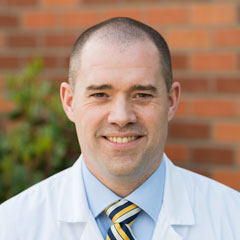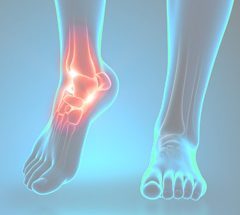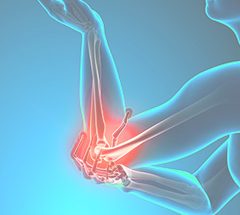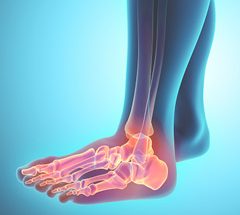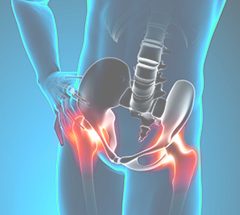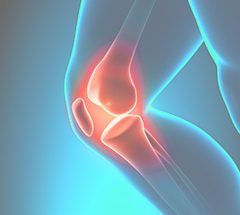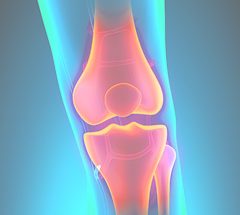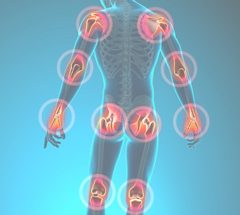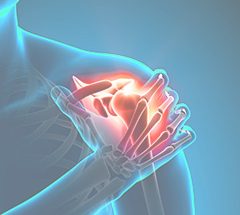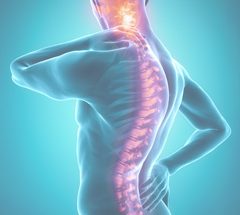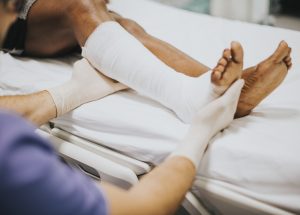Posterior Cervical Discectomy and Laminotomy
Learn more about what is involved when a minimally invasive cervical laminotomy and discectomy are performed on your neck.
What is a cervical laminotomy and discectomy?
The nerves exiting the cervical spine can be pinched as they leave the spine by disc herniations and/or bone spurs. If this occurs where the nerve leaves the spine, it can sometimes be treated with a surgery from the back of the neck without having to fuse the spine.
What is an intervertebral disc?
An intervertebral disc is a kidney shaped structure located between each pair of vertebrae. They are designed to redistribute forces incurred by the spinal column when sitting, standing, or lifting. The normal intervertebral disc is composed of a semi-liquid substance (nucleus) surrounded by several layers of fibrous rings (annulus fibrosus). Together they form a self-contained unit. Force is transmitted directly onto the semi-liquid center and then redistributed outwards toward the outer fibrous rings.
What causes a nerve to be pinched?
A tear in the outer fibrous ring can allow the semi-liquid center of the disc to work its way through the outer ring and push on nerves. This is known as a disc herniation. Herniated disc, ruptured disc, and a slipped disc generally mean the same thing.
There are five discs in your neck located between each pair of vertebrae from C2 to C7. The C4-5, C5-6 and C6-7 discs are the three discs that most commonly rupture. The nerve can also be pinched from a bone spur instead of a disc herniation. Depending on the level involved, different nerves may be pinched. Pressure on the nerve may manifest itself in the form of pain, numbness, weakness, tingling, and/or loss of a reflex. The distribution of symptoms varies depending on which nerve root is involved.
What are the main reasons for performing a microdiscectomy?
Most disc ruptures resolve gradually without surgical intervention. Bone spurs are less likely to resolve. The most common reason to have surgery is to alleviate arm pain, which has not resolved within a reasonable time period. Many people would like to be more active than their pain allows and this usually persuades them to have surgery.
If your pain is mild or moderately tolerable we do not recommend surgery. We also feel that numbness, tingling, or the loss of a reflex are not sufficient reasons to indicate surgery. There does not appear to be a significant difference in the results of patients with muscle weakness when treated surgically versus those treated non-surgically. Therefore, muscle weakness that is not associated with arm pain is usually treated conservatively as the muscle may eventually gain strength about 80% of the time.
It is important to realize disc surgery is quite effective in relieving pain in the shoulder area or pain that travels down the arm; however, it is not particularly effective in relieving neck pain. Neck pain is typically treated with aggressive rehabilitation. The primary reason to proceed with surgery is to relieve pain in the shoulder or arm sooner than would be accomplished without surgery.
What is the chance of a successful outcome?
A cervical microdiscectomy is 85% to 95% successful in relieving pain in the shoulder and arm. Pain relief is typically quite rapid, although in specific instances, it may take six to eight weeks for the nerve to calm down. Since a nerve has often been pinched for a long time, the success rate is rarely 100% as there is usually some residual mild tingling, weakness, or pain, all of which are usually tolerable.
What are the limitations of the procedure?
Surgery is intended only to remove pressure from a pinched nerve. When a disc ruptures, a hole is created in the outer ring of the disc. During surgery, the surgeon will enlarge this hole to remove any loose material. However, there is no way to repair the hole. Even though surgery is quite effective in getting rid of shoulder and arm pain, you are still left with a disc that is permanently damaged. It is possible to re-herniate more disc material through the same hole.
What happens during surgery?
During surgery, you are carefully positioned face down on a padded frame. A small incision is made on the back of your neck, over the level of the ruptured disc and/or bone spur. The muscle is gently spread with a series of dilators. A tube is then placed over the dilators and the dilators are then removed. The surgery is performed through this small tube that has a diameter smaller than a quarter.
A small amount of bone is trimmed from the lamina to create a space between the two vertebrae. Soft tissues, including ligaments and facet joint capsule may also be removed. Only a small amount of bone is removed, so no instability results from surgery. Using a microscope, we can look very carefully underneath the nerve root to pull free any fragments of disc or soft tissue. In many situations, in which there is only bony impingement, we do not have to look at the disc; we simply remove the area of the bone spurs.
Why is a microscope used?
The microscope allows us to make a smaller incision. It enhances our visualization by magnifying the field and providing better lighting. A microscope is simply a way of making the procedure safer and more reliable; the general principles remain the same.
What are the alternative methods for taking pressure off a nerve?
The alternative procedure for removing the pressure on a nerve is to do what is called an anterior cervical discectomy and fusion. This surgery is done through the front of your neck. The disc is removed from the front and the space between the vertebrae is filled with a bone graft. Anterior cervical discectomy/fusion may be the procedure of choice if the bone spurs are large and towards the midline.
For the ruptured disc off to the side, many surgeons still prefer to use an anterior approach. It may be more reliable in relief of neck and arm pain. However, this is a more invasive operation and the pros and cons of anterior versus posterior procedures should be discussed thoroughly with one of our surgeons.
What happens after surgery?
After surgery many patients have significantly less arm pain, although, your neck will be quite sore. Even though the size of the incision is small, pain should be expected as your muscles were manipulated during the procedure.
We have found that there is a lower incidence of complications if you are mobilized early.
Due to the combination of anesthesia and pain medications, you may feel nauseated and have difficulty urinating. A significant number of patients require a catheter in their bladder to enable them to urinate. You may go home once your pain can be controlled with pills, your bowel and bladder are functioning normally, you have minimal nausea, and you are able to eat food. Most patients are ready to go home the same day as surgery or the next day. Occasionally the hospital stay may last longer.
What am I allowed to do when I go home?
You will be sent home with a soft collar. This soft collar is to be used for comfort only. Once you are comfortable without the collar, you may remove it. You will be able to take care of yourself, go up and down stairs, and move around based on your own comfort level. There are few limitations, and patients should let pain be their guide with respect to their activity level.
When can I return to work?
Each situation is unique and should be discussed with your physician prior to surgery.
What are the major risks of this procedure?
Although the overall risks of surgery are low, no surgery is without risk. Your surgeon will discuss these risks in detail with you prior to surgery.
What is your overall philosophy regarding spine surgery?
We recommend you have surgery if your symptoms are disruptive to your quality of life and there is a specific anatomic lesion that can be corrected. However, if your symptoms are tolerable or we cannot find a specific structural problem causing your pain, surgery is probably not a good idea. It is our role to define whether or not there is a structural lesion that can be corrected. However, only you can determine if the pain and discomfort you are experiencing is worth the risk of surgery.
Feel free to discuss any further questions or concerns with your physician.



